Family Cactaceae Tribe Pachycereeae Rank Species | Scientific name Carnegiea gigantea Higher classification Carnegiea | |
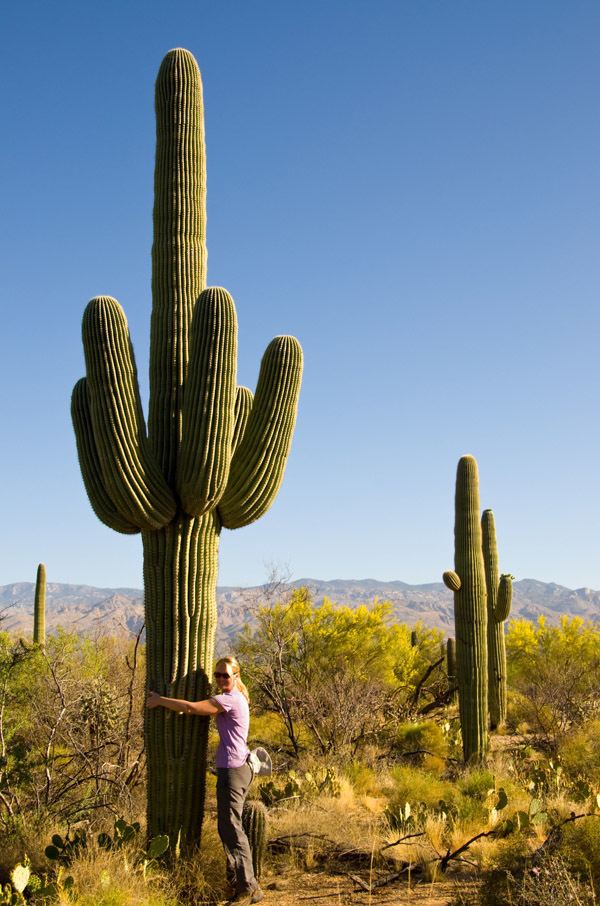 | ||
Conservation status Least Concern (Population decreasing) Similar Cactus, Prickly pear, Cylindropuntia, Daisy anemones, Mammillaria | ||
Beautiful arizona the saguaro cactus
The saguaro (/səˈwɑːroʊ/, [saˈɣwaɾo]) (Carnegiea gigantea) is an arborescent (tree-like) cactus species in the monotypic genus Carnegiea, which can grow to be over 70 feet (21 m) tall. It is native to the Sonoran Desert in Arizona, the Mexican State of Sonora, and the Whipple Mountains and Imperial County areas of California. The saguaro blossom is the state wildflower of Arizona. Its scientific name is given in honor of Andrew Carnegie. In 1994, Saguaro National Park, near Tucson, Arizona, was designated to help protect this species and its habitat.
Contents
- Beautiful arizona the saguaro cactus
- Giant saguaro cactus
- Growth
- Genome
- Spines
- Flowers
- Fruit
- Nests
- Laws
- Ethnobotany
- Location
- References
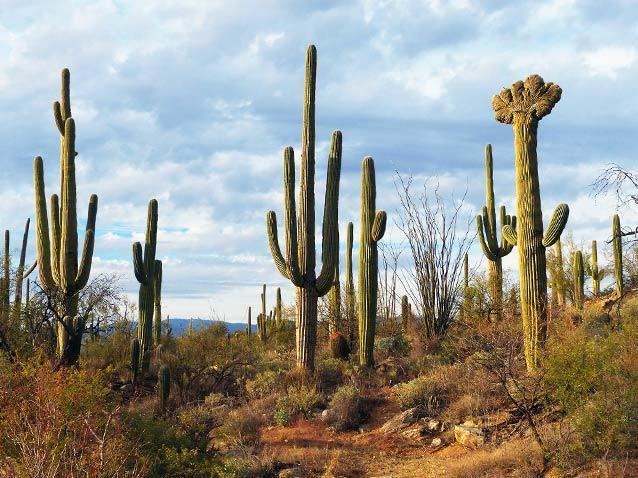
The image of the saguaro is indelibly linked with that of the American Southwest, especially in western films. The common name saguaro came into the English language through the Spanish language, originating in the Mayo language.
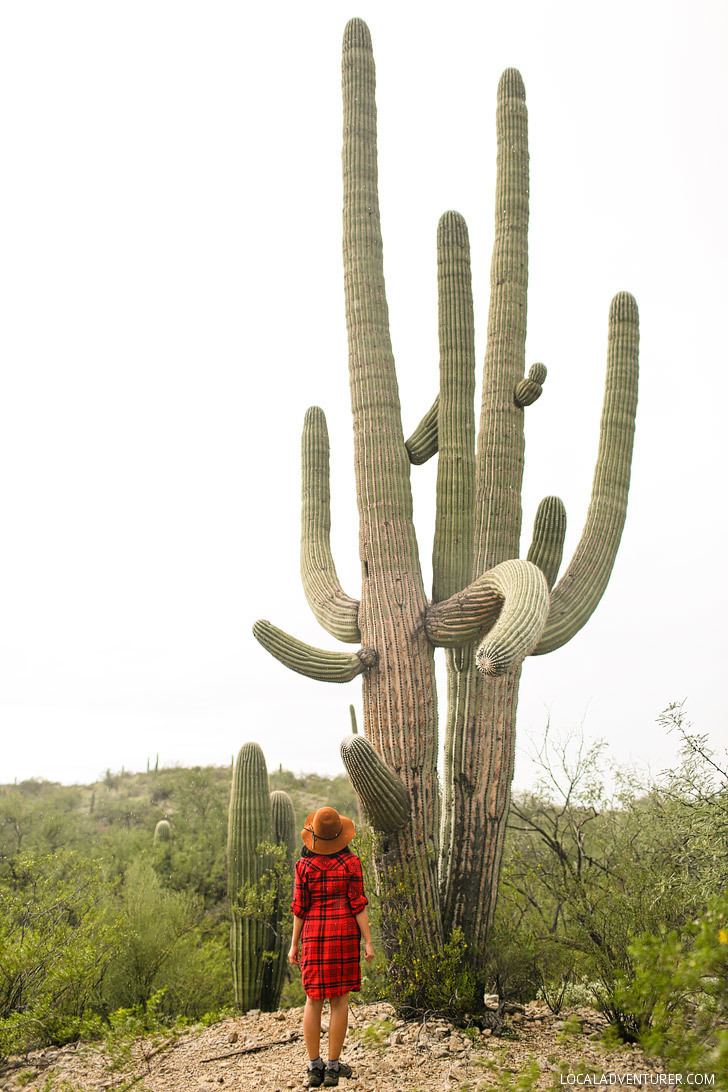
Giant saguaro cactus
Growth
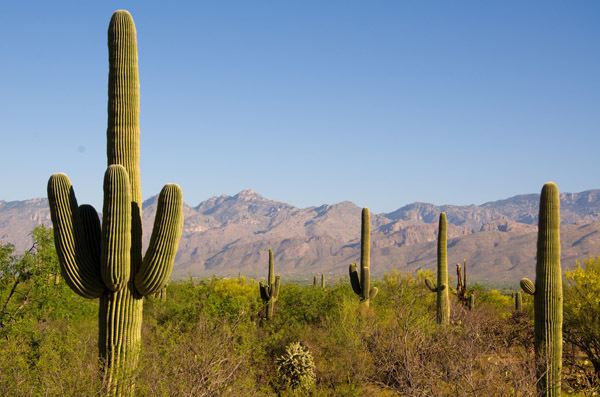
Saguaros have a relatively long lifespan, often exceeding 150 years. They may grow their first side arm any time from 75–100 years of age, but some never grow any arms. A saguaro without arms is called a spear. Arms are developed to increase the plant's reproductive capacity, as more apices lead to more flowers and fruit.

The growth rate of saguaros is strongly dependent on precipitation; saguaros in drier western Arizona grow only half as fast as those in and around Tucson. Saguaros grow slowly from seed, never from cuttings, and grow to be over 40 feet (12.2 metres) in height. The largest known living saguaro is the Champion Saguaro growing in Maricopa County, Arizona, measuring 45.3 feet (13.8 metres) high with a girth of 10 feet (3.1 metres). The tallest saguaro ever measured was an armless specimen found near Cave Creek, Arizona. It was 78 feet (23.8 metres) in height before it was toppled in 1986 by a windstorm.
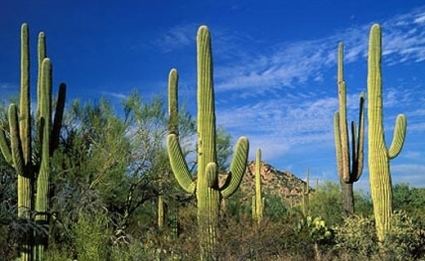
A saguaro is able to absorb and store considerable amounts of rainwater, visibly expanding in the process, while slowly using the stored water as needed. This characteristic enables the saguaro to survive during periods of drought.
Genome

The saguaro genome is around 1.5 billion base pairs long (about the half of the human genome's length). Sequencing has revealed that the genome of the saguaro's chloroplast is the smallest known among non-parasitic flowering plants.
Spines
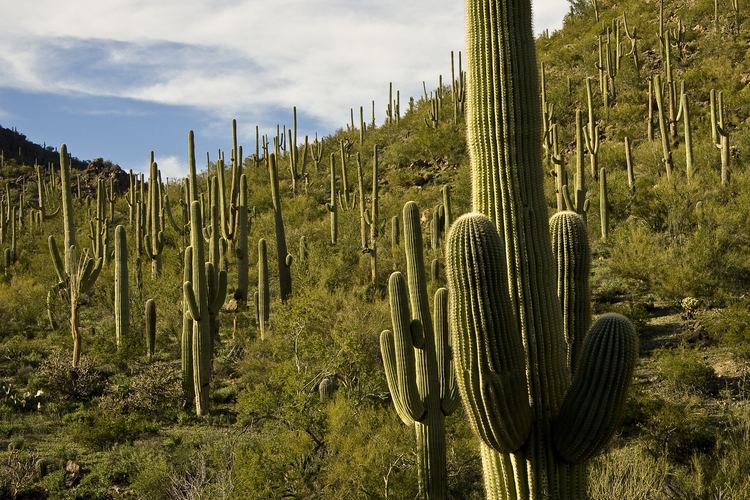
The spines on a saguaro, less than two meters in height, rapidly grow up to a millimeter per day. When held up to the light or bisected, alternating light and dark bands transverse to the long axis of spines can be seen. These transverse bands have been correlated to daily growth. In columnar cacti, spines almost always grow in areoles which originate at the apex of the plant. A spine stops growing in its first season. Areoles are moved to the side and the apex continues to grow upwards. Thus, older spines are towards the base of a columnar cactus and newer spines are near the apex. Studies are underway to examine the relationship of carbon and oxygen isotope ratios in the tissues of spines of an individual to its climate and photosynthetic history (acanthochronology).
Flowers
Flowers appear in April through June. They are white and open well after sunset and close in mid-afternoon. They continue to produce nectar after sunrise. Flowers are self-incompatible, thus require cross-pollination. Large quantities of pollen are required for complete pollination because many ovules are present. This pollen is produced by the extremely numerous stamens which in one case totaled 3,482 in a single flower. A well-pollinated fruit contains several thousand tiny seeds. Saguaros have a redundant pollination system, i.e. full fruit set is possible even if only a fraction of the pollinating species are present.
Main pollinators are honey bees, bats, and white-winged doves. In most years, diurnal visitors are the main contributors for fruit, most of them honey bees. Other diurnal pollinators are birds such as Costa's hummingbird, the black-chinned hummingbird, the broad-billed hummingbird, the hooded oriole, Scott's oriole, the Gila woodpecker, the gilded flicker, the verdin, and the house finch.
The main nocturnal pollinator is the lesser long-nosed bat, feeding on the nectar. A number of floral characteristics are geared toward bat pollination: nocturnal opening of the flowers, nocturnal maturation of pollen, very rich nectar, position high above ground, durable blooms that can withstand a bat's weight, and fragrance emitted at night. Further, the amino acids in the pollen appear to help sustain lactation in bats.
Fruit
The ruby red fruits are 6–9 cm long and ripen in June. Each fruit contains around 2000 seeds plus sweet fleshy connective tissue. The fruits are edible and prized by local people.
The fruits cannot be picked by hand, but must be harvested using a pole (often a saguaro rib) 2 to 5 m long, to the end of which is attached another pole.
The O'odham tribes have a long history of saguaro fruit use. The Tohono O’odham tribes celebrate the beginning of their summer growing season with a ceremony using a fermented drink made from the bright red fruit to summon rains, vital for the crops.
Nests
Native birds such as Gila woodpeckers, purple martins, house finches, and gilded flickers live inside holes in saguaros. Flickers excavate larger holes higher on the stem. The nest cavity is deep, and the parents and young are entirely hidden from view. The saguaro creates callus tissue on the wound. When the saguaro dies and its soft flesh rots, the callus remains as a so-called "saguaro boot", which was used by natives for storage.
The Gila woodpeckers (Melanerpes uropygialis) create new nest holes each season rather than reuse the old ones, leaving convenient nest holes for other animals, such as elf owls, flycatchers, and wrens. In recent years, early-breeding, aggressive, non-native birds have taken over the nests to the detriment of elf owls that breed and nest later.
Laws
Harming a saguaro in any manner, including cactus plugging, is illegal by state law in Arizona, and when houses or highways are built, special permits must be obtained to move or destroy any saguaro affected. Exceptions to this general understanding exist; for example, a private landowner whose property is 10 acres or less, where the initial construction has already occurred, may remove a saguaro from the property. This is common when the cactus falls over in a storm, its location interferes with a house addition, or it becomes a potential hazard to humans.
Ethnobotany
Location
The saguaro is often used as an emblem in commercials and logos that attempt to convey a sense of the Southwest, even if the product has no connection to Arizona or the Sonoran Desert. For instance, no naturally occurring saguaros are found within 250 miles (400 km) of El Paso, Texas, but the silhouette is found on the label of Old El Paso brand products. Though the geographic anomaly has lessened in recent years, Western films once enthusiastically placed saguaros in Monument Valley of Arizona, as well as New Mexico, Utah, and Texas. The Dallas, Texas-based band, Reverend Horton Heat, pokes fun at this phenomenon in their song "Ain't no Saguaro in Texas". No wild saguaros are found anywhere in New Mexico, Texas, Colorado, Utah, or Nevada, nor in the high deserts of northern Arizona.
